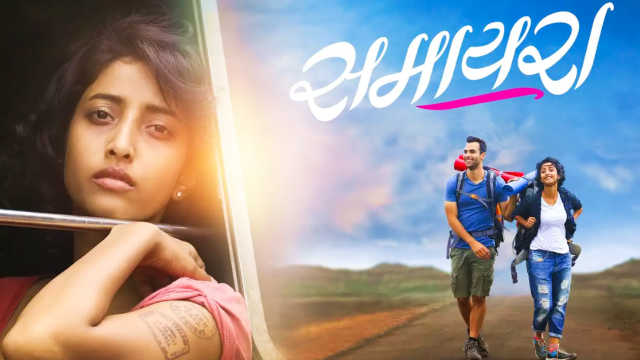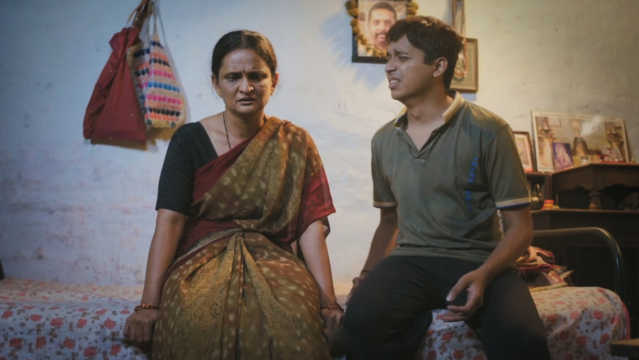
Suyog Zore
Mumbai, 26 Nov 2020 20:30 IST
The National award-winning 47-minute biographical documentary by Reena Mohan sees Kamlabai Gokhale, then 90, narrate her journey through Indian cinema.

Kamlabai Gokhale was one of the earliest film artistes in India, and the first lady of Indian cinema. She, along with her mother Durgabai Kamat, starred in Dhundiraj Govind 'Dadasaheb' Phalke’s Bhasmasur Mohini in 1914.
Capturing the entire career of a pioneering actress in just one documentary may well have proved an impossible task, and that is probably why independent filmmaker and editor Reena Mohan chose an unconventional method for her National award-winning documentary titled, simply, Kamlabai.
This 47-minute film shot over three years from 1988 through 1991 is based on conversations with Kamlabai Gokhale in which she recounts her past and her present. Blind in one eye, lame in one leg, missing all her teeth, Gokhale, pushing 90 at the time, was still a vibrant personality. Her playful streak shines through when she breaks the fourth wall and interacts directly with the camera and the film crew.
Kamlabai has to be one of the most intimate, unfiltered documentaries produced in India. Gokhale lived alone in her apartment in Pune’s Kothrud locality at the time. The flat was locked from the outside and neighbours were given a set of keys to let the maid or visitors in.
Reena uses Gokhale's restrictions on mobility because of her age as a narrative tool by using static long shots of her in her surroundings. Gokhale acts out iconic scenes from her plays and films and recalls her parts in plays by Shakespeare and from the Indian epics.
In between her reminiscences, she often breaks off to converse with the crew and to offer advice to the filmmaker, like “Please marry soon, Reena!” It was a wise choice by the director, who also edited the documentary, to retain these portions in the final cut because these little interactions reveal the caring woman behind the seasoned artiste.
Gokhale’s husband, Raghunathrao, died when she was 25 and pregnant with her third son. She continued to appear in plays and films. Despite her prolific career Gokhale still considered herself an ordinary actress.
Because of the sacrifices she had to make to survive in the excessively male-dominated industry, Gokhale was deeply committed to her craft. On one occasion, a balcony filled with women in a theatre came crashing down from the weight, but the play didn’t stop, she recalls.
The veteran recounts numerous episodes from her years on stage and in cinema as well as from her personal life. She recalls her abusive father (“he ran after whores,” she says bluntly), her grandmother and mother’s emphasis on self-reliance, and the joys of touring with theatre companies on bullock carts.
About Phalke, who cast the mother-daughter pair in Bhasmasur Mohini, she recalls, “It made you happy to see him.”
Reena Mohan, a graduate from the Film and Television Institute of India, Pune, had never made any documentary before and initially wanted to only interview Gokhale for a book on cinema, but on journalist Rani Day Burra's persistence, who also accompanied her for the interview, she decided to make a documentary.
In fact, the first cut didn’t go down too well with her trial audience, because she had destroyed the spontaneity by dressing up space and making Gokhale sit in a chair, Reena revealed in a discussion at the Indian Institute for Human Settlements last year. Things improved when she went back and allowed Gokhale to be comfortable and wear whatever she wanted. The director even allowed her to lie in bed.
Kamlabai was a self-funded documentary. Reena Mohan used her earnings from the edit of Manjira Datta’s The Sacrifice Of Babulal Bhuiya (1987). By the time Kamlabai was completed, she had spent Rs4 lakh of her own money, which included Rs50,000 borrowed from cinematographer Anil Mehta, to pay for the rights for clips from Phalke’s silent films.
Reena Mohan had also interviewed two of Gokhale’s sons, including Chandrakant, the famous Marathi film and stage actor and father of well-known actor Vikram Gokhale, but had to cut them out from the final edit because that would be like viewing Kamlabai from the outside, through someone else’s eyes, and she wanted to keep the focus solely on her.
The only time we see the Gokhale family together is when they pose for a group photograph. It is one of the documentary’s most beautiful moments. A handful of the Gokhales, including Chandrakant and Vikram, assemble in front of the camera. They stand so still that it appears as though it is a group photograph. The spell is broken by Chandrakant, who recalls a similar photo taken years ago. Nobody else in the scene moves as Chandrakant points out some of the things that have changed and others that haven't.
Kamlabai gives us a peek at the history of Indian cinema and theatre as experienced by a woman who struggled against the social strictures of her times and paved the way for many others like her own great-granddaughter Sakhi Gokhale to follow.
The documentary Kamlabai is now available on YouTube. Watch it here.
Related topics
YouTubeYou might also like

Review Marathi
Samaira review: This well-intentioned travel drama suffers from a dull script
Actor Rishi Deshpande's directorial debut doesn't rise as much as its performances. ...

Review Marathi
Goshta Arjunchi review: Triggering conversations about mental health
Anupam Barve’s short film urges people to talk to their families about what they are going...

Review Marathi
Ekda Kaay Zala review: Sumeet Raghvan impresses in a film that does not use its full potential
Directed by Dr Saleel Kulkarni, the film has a fine act by child artiste Arjun Purnapatre....

